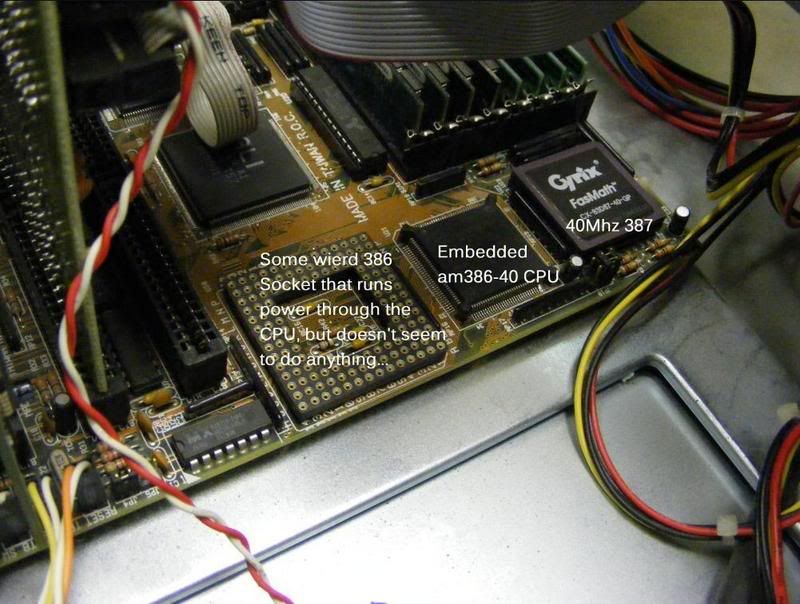Hello I'm new to this forum.
I'd like to start by saying:
I have a 386-40 that has 3 cpu's plugged in. One is an am386-40 embedded. The next is a Cyrix Fasmath-40mhz 387 CPU. The next is a second am386-40. I installed the two non-embedded ones.
Both am386-40's are running hot. The cyrix 387 is cold. I Did not run DooM or DooM II to test the cyrix 387 temperature theory, but I can. BIOS generated startup screens and windows 95c both detect the 387, but this is a side issue.
Do you think this PC supports multiprocessing?
Windows displays "80386, 80387" under my computer->properties
My system info is as follows:
• am386-40
• am386-40
• 387-40
• 20mb RAM
• baby (?) AT board (very tiny appearance)
• 1mb trident video
• creative awe64 sound
• 400mb hdd
• 8x cd-rom
• 3.5" floppy drive
• basic peripherals - mouse/keyboard/speakers/monitor
• Turbo Button feature
• AMI BIOS 1993
thanks for your comments on this interesting topic
I'd like to start by saying:
I have a 386-40 that has 3 cpu's plugged in. One is an am386-40 embedded. The next is a Cyrix Fasmath-40mhz 387 CPU. The next is a second am386-40. I installed the two non-embedded ones.
Both am386-40's are running hot. The cyrix 387 is cold. I Did not run DooM or DooM II to test the cyrix 387 temperature theory, but I can. BIOS generated startup screens and windows 95c both detect the 387, but this is a side issue.
Do you think this PC supports multiprocessing?
Windows displays "80386, 80387" under my computer->properties
My system info is as follows:
• am386-40
• am386-40
• 387-40
• 20mb RAM
• baby (?) AT board (very tiny appearance)
• 1mb trident video
• creative awe64 sound
• 400mb hdd
• 8x cd-rom
• 3.5" floppy drive
• basic peripherals - mouse/keyboard/speakers/monitor
• Turbo Button feature
• AMI BIOS 1993
thanks for your comments on this interesting topic

